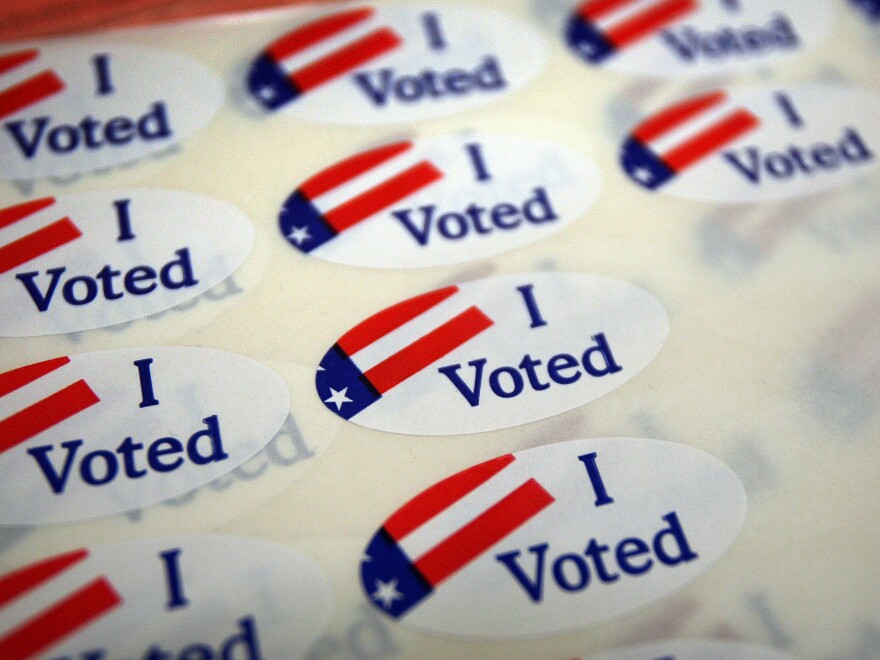Stephen Richer has never run a presidential election before.
He oversees voting as the county recorder in Arizona's largest county, Maricopa County, and took office in 2021.
Yet as November approaches in the closely scrutinized swing state, Richer finds himself looking across the profession and realizing he's essentially an old-timer.
"There are 15 recorders in 15 counties ... and I'm already, I think, fifth-most senior or fourth-most senior of the 15," Richer told NPR recently, at an event hosted by the Campaign Legal Center. "So, yeah, [turnover] is real."
A new report out Tuesday confirms that, and provides the most in-depth nationwide analysis yet of the people at the heart of the democratic process: the thousands of election officials across the U.S. that administer voting.
It's been clear for some time that the work environment in these jobs was becoming unsustainable. Threats and harassment have become commonplace since the flurry of voting lies that followed Donald Trump's loss in 2020, while at the same time, the actual job duties required have been steadily growing more complex.
And this new report, authored by researchers at UCLA and the Bipartisan Policy Center, confirms people are now leaving the profession at a faster rate than any point in the previous two decades.
But the report also adds new context to the phenomenon.
A 20-year take on turnover
Notably, the report took a long view to the turnover question and found that while attrition did increase in the time following 2020, it's been slowly increasing for years — meaning "election administration might be more equipped to respond to it than previously speculated."
"Turnover is not a new phenomenon," said Rachel Orey, senior associate director at the Bipartisan Policy Center Elections Project. "It is a long-term issue with roots in chronic challenges facing the election administration workforce."
Those include chronically low pay and resources, as well as rapidly changing laws that often add new responsibilities or pressure onto election officials.
Orey worked with Joshua Ferrer and Daniel Thompson of UCLA to analyze a novel dataset that included more than 18,000 local election officials across more than 6,000 election jurisdictions.
The researchers measured whether a local election office changed hands over a 4-year cycle. In 2022 (the most recent year with complete data), the turnover rate was 39%, compared to 28% in 2004.

In recent years, as the attrition began to snowball, experts worried the impact on 2024 could be disastrous.
New election officials tend to make more mistakes, and conspiracy theories about voting tend to focus on honest mishaps to try to build a false narrative that voting more broadly can't be trusted.
But Orey says this new report should calm some of those fears, because the officials replacing those leaving were also found to have extensive experience working in the field.
"One thing that was really comforting about this report was that while we have seen slight increases in turnover in recent years, the experience levels of incoming officials is quite high," Orey said.
On average, incoming officials were found to have eight years of experience working in elections. And in larger jurisdictions with more than 100,000 voters, which in recent years have felt the brunt of misinformation as well as turnover struggles, incoming officials were found to have an average of 11 years of experience.
"These folks have experience, maybe not as a chief election official, but potentially as a deputy or working in the office. So they know what it's like to run an election, and we're confident in their preparedness going into November," Orey said. "This report was a lot more comforting than I expected it to be."
She added that, provided governments supply the resources and training for new officials to be successful, turnover can also provide a good opportunity to diversify the voting landscape. In 2023, the most reputable survey of lead election officials estimated the workforce to be 92% white, with the majority of officials also older than 50 years old.
"Turnover is a healthy part of maintaining a young and diverse workforce, something that the election workforce has honestly struggled to maintain in the past," Orey said.
Turnover has spiked in battleground states
The new report also found that turnover affected election offices regardless of political lean and geography but that it starkly increased in competitive states after 2020.

In North Carolina, the executive director of the state's board of elections spoke out last month about the turnover trend she's seen there.
"In five years of tracking this information, we've had 58 changes in county election directors. In some of these counties, in this period of time, they will be on their third directors," said Karen Brinson Bell, North Carolina's lead voting official. "We are seeing an exodus from this profession across the country."
Bell said local voting officials have had to become cybersecurity and physical security experts in addition to their normal job duties, without being compensated for those extra responsibilities.
"It's still a work environment where a lot of times these folks are paid at a level of administrative work — not to disparage administrative work — but these jobs are more complex than administrative work," Bell said. "Days of old, yes. We sat at a typewriter and typed up voter registration cards.
"That is no longer the case."
Copyright 2024 NPR




